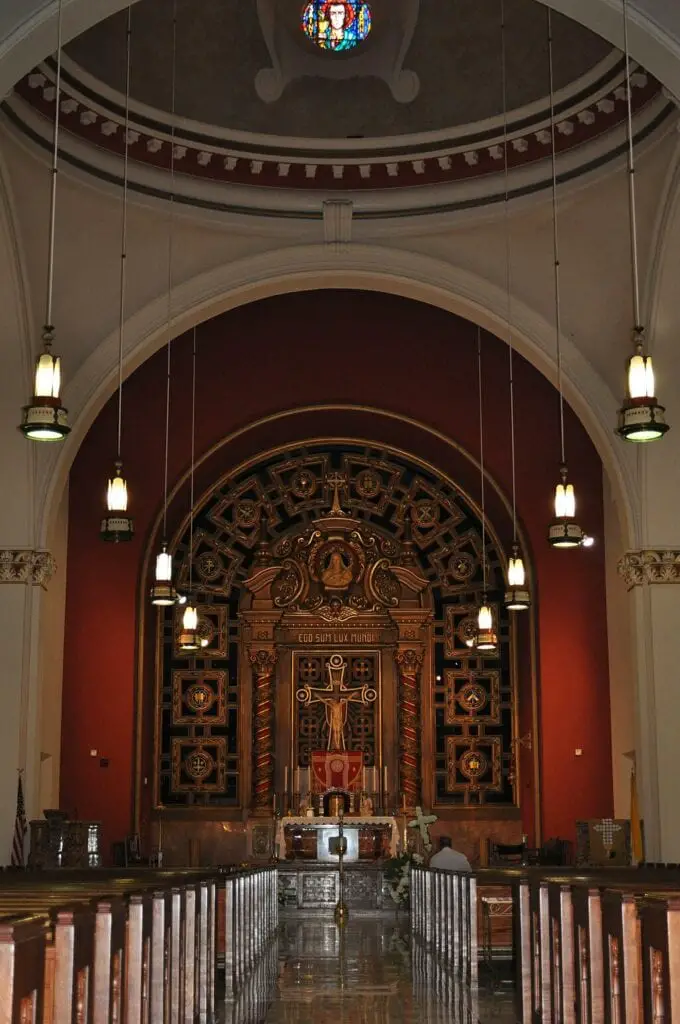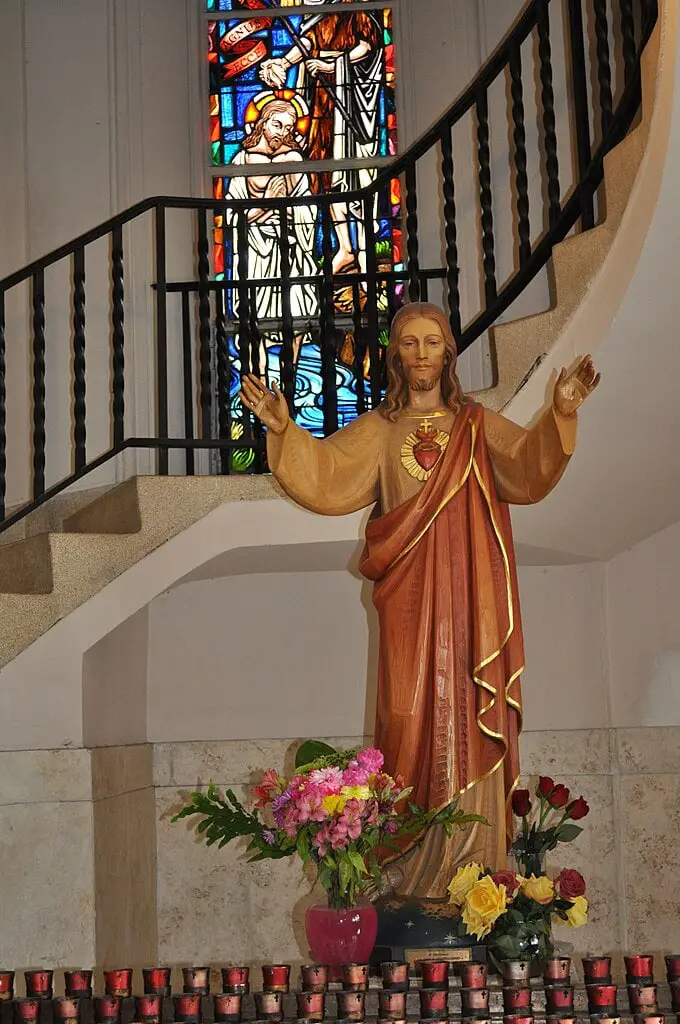History and Establishment
Nestled in the heart of Coral Gables, Florida, the Church of the Little Flower stands as a beacon of faith, resilience, and community spirit. Its roots trace back to the spring of 1926 when a small group of Catholics in the developing community of Coral Gables envisioned a place of worship.
The Most Reverend Patrick J. Barry, Bishop of Saint Augustine, christened the parish in honor of Saint Therese of Lisieux, France, a Carmelite Sister, fondly known as the “Little Flower,” who had been canonized at the Vatican the previous year.
The church’s founding Pastor, Father Thomas Comber, a missionary priest from Ireland, was entrusted with overseeing the church’s construction. Despite the economic constraints of the Great Depression, Father Comber’s vision for a Spanish Renaissance-style church was realized, albeit in a simpler form.
The initial construction of the new parish was the parish center and auditorium, which functioned as a provisional place of worship. The formal dedication and blessing of the building took place on December 8, 1927, an event recognized by The Miami News as “one of the most noteworthy and significant events in the history of Coral Gables.”
A Testament to Time: Architectural Significance
The Church of the Little Flower is a remarkable example of Spanish Renaissance architecture, a style characteristic of the Mediterranean Revival architecture for which Coral Gables is noted. The church’s domed 1951 building was constructed in this style, adding to the aesthetic charm of the city.
The construction of the new church in 1951 was a significant milestone in the history of the Church of the Little Flower. The stained glass windows, designed by William Haley, added a unique artistic touch to the church’s interior.
The new church was dedicated by Archbishop Joseph P. Hurley of Saint Augustine, Florida, on December 8, 1952, marking a new era of worship for the parish. With its seating capacity of 900, this architectural marvel has since been the center of parish worship.

A Melting Pot of Cultures: Cultural and Social Impact
Over the years, the Church of the Little Flower has witnessed a significant shift in its congregation’s composition. For most of the 20th century, its members were predominantly Irish-American political liberals who voted for the Democratic ticket. However, most members were Cuban-Americans by the end of the century, known for their political conservatism and Republican voting tendencies.
The church has also served as a gateway to social advancement, with its membership perceived as a stepping stone to higher social status.
This aspect of the church’s social impact has been a significant factor in shaping the community of Coral Gables. The church’s congregation has also seen a substantial shift in its political affiliations, with most members now active in the Republican Party.

The Present and Beyond: Current Status and Activities
Today, the Church of the Little Flower continues to play a vital role in the spiritual life of its congregation. In June 2019, Fr. Manny Alvarez was named the 9th Pastor of the Church of the Little Flower, marking a new chapter in the church’s history. Under his leadership, the church has continued to thrive and serve its community.
The church recently underwent a significant repair of its roof, a long overdue project carried out without disrupting the Sunday Masses. Also, in September 2022, the regular livestream of COTLF Masses was discontinued, signaling a return to traditional, in-person worship.
USA Quiz
How many questions would you like?
This decision was met with mixed reactions from the congregation but marked a significant step towards normalcy in the post-pandemic world.

A Beacon of Faith: Conclusion
The Church of the Little Flower, with its rich history, architectural significance, and cultural impact, remains a cornerstone of the Coral Gables community.
As it continues to serve its congregation and adapt to changing times, the church stands as a symbol of enduring faith and community spirit. Its story is a testament to the resilience of its congregation and the unyielding nature of the community it serves.


